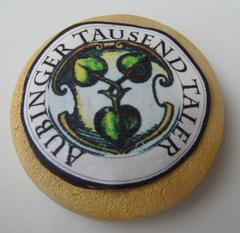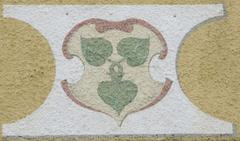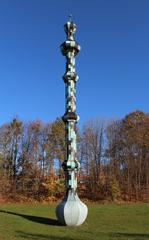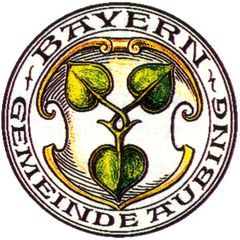
A Complete Guide to Visiting Aubing, Munich, Germany: Visiting Hours, Tickets, and Attractions
Date: 15/06/2025
Introduction
Aubing, located in the western district of Munich, is a captivating destination that seamlessly weaves together Bavaria’s ancient history, vibrant culture, and scenic natural beauty. With origins stretching back to prehistoric times and a documented history from the early 11th century, Aubing offers a rich narrative reflected in its historic sites, lush green spaces, and lively community. Here, visitors can explore Romanesque churches, medieval castles, modern art venues, and tranquil nature reserves—all easily accessible via Munich’s efficient S-Bahn network. This comprehensive guide provides essential information on Aubing’s standout attractions, visiting hours, ticketing, accessibility, and local experiences to help you plan an enriching and memorable visit. For the latest updates and interactive resources, be sure to consult official Munich tourism platforms and the Audiala app (Munich Tourism - Aubing, Bergson Kunstkraftwerk, Aubing Castle Official Site).
Table of Contents
- Introduction
- Aubing’s Historical Timeline
- Visiting Information
- Exploring Aubing’s Natural Spaces
- Local Culture and Lifestyle
- Aubing Castle: History and Visitor Guide
- Frequently Asked Questions (FAQ)
- Conclusion
- Additional Resources and Links
Aubing’s Historical Timeline
Early Settlement and Archaeological Heritage
Aubing’s roots reach back to pre-Roman times, as evidenced by archaeological discoveries such as a terraced burial ground from the 5th to 7th centuries. These sites highlight the area’s significance in early Bavarian history and are preserved for those interested in ancient cultures.
Medieval Foundations and Monastic Influence
The first written mention of Aubing was in 1010, when King Henry II granted the village to Polling Abbey. In 1330, Ludwig the Bavarian transferred ownership to Ettal Abbey, ushering in nearly 500 years of monastic rule. This period shaped Aubing’s agricultural and cultural landscape, with remnants still visible in its architecture and traditions.
Village Life and Economic Development
Aubing developed as the largest village west of Munich, with a diverse population of farmers, craftsmen, and innkeepers. The local economy benefited from supplying peat and scouring sand to Munich. Historic sites, like the early 19th-century school on Alto Street, symbolize Aubing’s commitment to education and community.
Impact of the Thirty Years’ War
The devastating Thirty Years’ War in the 17th century left a lasting mark, with Swedish troops plundering and destroying farms in Aubing. This history of resilience continues to inform the district’s identity.
19th Century Transformation and Railway Connection
Secularization ended monastic governance, and Aubing became an independent municipality in 1818. The opening of the Munich-Buchloe railway line in 1873, with a station near St. Quirin Church, spurred substantial growth and integration with the broader Munich region.
Incorporation into Munich and Modern Growth
Aubing was incorporated into the city of Munich in 1942 and, along with Lochhausen and Langwied, now forms the Aubing-Lochhausen-Langwied borough. Modern developments, especially in the Freiham district, reflect Aubing’s blend of rural charm and contemporary urban life.
Preserving Aubing’s Heritage
The Aubing Archive, established in 1993, plays a key role in preserving local history through exhibitions and publications. Ongoing cultural events and initiatives uphold the district’s rich traditions.
Visiting Information
Key Sites and Attractions
- St. Quirin Church: Romanesque church with a thousand-year-old tower. Open daily, free entry.
- Bergson Kunstkraftwerk: Germany’s largest art gallery, housed in a converted industrial building.
- Aubinger Lohe Watchtower: Offers panoramic views of Munich and the Alps.
- Aubing Castle: Medieval castle with guided tours and seasonal events.
Opening Hours & Tickets
- St. Quirin Church: Mon–Sat 9:00–18:00, Sun 10:00–17:00; free admission.
- Bergson Kunstkraftwerk: Daily 10:00–20:00; entry fees vary by event (Bergson Kunstkraftwerk).
- Aubinger Lohe Watchtower: Open dawn to dusk; free.
- Aubing Castle: April–October, Wed–Sun 10:00–17:00; €8 adults, €4 children, free under 6 (Aubing Castle Official Site).
Accessibility and Transport
- S-Bahn lines (notably S3 and S4) serve Aubing, with additional bus connections and ample bike paths (Munich Public Transport).
- Most attractions and parks are wheelchair accessible.
Guided Tours
- Guided walking tours available seasonally through Munich’s tourism office (Munich Tourism Guided Tours).
- Bergson Kunstkraftwerk and Aubing Castle offer weekend guided tours.
Practical Tips
- Visit lakes and parks early or on weekdays to avoid crowds.
- Many attractions are free, with fees for select cultural events.
- Dogs are permitted in most outdoor areas but must be leashed in nature reserves.
Family-Friendly Activities
- Modern playgrounds and sports facilities, including Freiham Sports Park.
- Beer gardens with play areas and family-friendly events.
- Seasonal festivals and open-air cultural events.
Events and Community Life
- Traditional maypole celebrations, Bavarian music festivals, and art fairs.
- Check community calendars for schedules (Wikipedia).
Exploring Aubing’s Natural Spaces
- Aubinger Lohe Forest Reserve: 130 hectares of woodlands, meadows, and trails. Ideal for hiking, jogging, and birdwatching (Munich Tourism - Aubing).
- Langwieder Seenplatte: Three interconnected lakes for swimming, boating, and picnics. Facilities include playgrounds, snack bars, and bike rentals.
- Freiham Landscape Park: New green space with sports fields, gardens, and event venues.
- Aubinger Moos: Protected wetland habitat with raised boardwalks and wildlife observation platforms.
Local Culture and Lifestyle
Gastronomy, Clubs, and Traditions
- Traditional Bavarian fare is served in cozy beer gardens like Aubinger Einkehr.
- Community clubs such as Burschenverein Aubing organize festivals and cultural events (adventurebackpack.com).
- Bergson Kunstkraftwerk hosts art exhibitions, concerts, and culinary events in a unique industrial setting.
Modern Developments and Community Character
- Aubing retains a village-like atmosphere with a low population density, spacious green areas, and family-friendly amenities (muenchen.de).
- The Freiham district reflects modern, sustainable urban planning.
- Multicultural festivals and events celebrate the area’s diversity.
Aubing Castle: History and Visitor Guide
History and Significance
Aubing Castle, dating to the 12th century, blends Romanesque and Gothic architectural elements and has served as both a fortress and noble residence. The castle grounds feature preserved ramparts, a charming courtyard, and a chapel with historic frescoes. It stands as a testament to the evolution of Munich’s outskirts and the Bavarian nobility (Aubing Castle Official Site).
Visiting Information
- Opening Hours: April–October, Wed–Sun 10:00–17:00; closed Mon–Tue.
- Tickets: €8 adults, €4 children (6–14), free for children under 6; family and group discounts available.
- Guided Tours: Weekends and holidays at 11:00 and 15:00; advance booking recommended.
- Accessibility: Wheelchair accessible; adapted restrooms available.
- Getting There: S4 to Aubing station, then 10-minute walk; also accessible by bus, car, or bike (Rome2Rio Aubing Travel Page).
Visitor Tips
- Photography is allowed outdoors; no flash photography inside the chapel.
- Wear comfortable shoes for cobblestone paths.
- Café on-site for refreshments.
- Private event rentals and audio guides available.
Frequently Asked Questions (FAQ)
Q: What are the main attractions in Aubing?
A: Key sites include St. Quirin Church, Aubing Castle, Bergson Kunstkraftwerk, Aubinger Lohe forest, and the Langwieder Seenplatte lakes.
Q: How do I reach Aubing from central Munich?
A: Take S3 or S4 S-Bahn lines; Aubing station is 20 minutes from Hauptbahnhof.
Q: Are guided tours available?
A: Yes, at Bergson Kunstkraftwerk, Aubing Castle, St. Quirin Church, and for local nature reserves.
Q: Are Aubing’s parks and lakes free to enter?
A: Yes, most outdoor spaces are free. Some events or activities may have a fee.
Q: Is Aubing suitable for families?
A: Absolutely, with playgrounds, sports parks, nature trails, and family-friendly events.
Conclusion
Aubing is a vibrant Munich district where history, culture, and nature blend to create a rewarding visitor experience. From ancient archaeological sites and medieval castles to contemporary art venues and tranquil natural spaces, Aubing has something for every interest. Its family-friendly atmosphere, welcoming community, and excellent transport links make it an ideal destination for travelers seeking an authentic taste of Munich beyond the city center. Enhance your journey with up-to-date resources from official tourism sites and the Audiala app for maps, audio guides, and events.
Additional Resources and Links
- Munich Tourism - Aubing
- Bergson Kunstkraftwerk
- Aubing Castle Official Site
- Aubing Archive Official Page
- Munich Public Transport
- Munich Tourism Guided Tours
- Rome2Rio Aubing Travel Page
- Wikipedia - Aubing-Lochhausen-Langwied
- Adventure Backpack - Munich Culture
- Muenchen.de - Aubing District








































































































